The Waterfowler’s Calendar
For die-hard hunters who can’t bear to see the season end, here’s a month-by-month guide to enjoying the waterfowling lifestyle year-round
For die-hard hunters who can’t bear to see the season end, here’s a month-by-month guide to enjoying the waterfowling lifestyle year-round
By Doug Larsen
Illustrations by Gary Palmer
Last July, on a day when it was about 104 degrees in the South, I got a text message from a good friend. It was a photo of him sitting in one of those old-school lawn chairs with the colored webbing. He was in the shade of his backyard stringing decoys. His T-shirt was soaked through, and there was a pile of decoys behind him that you couldnt have covered with an infield tarp. The caption read, every day is duck season.
For people who love waterfowling, those may be the truest words ever written. I count myself among those people who find waterfowl and things relating to waterfowl everywhere in our daily lives. We mark our calendars not only for duck season but for the before, after, and during of duck season. It is just who we are and how we are. So with that introduction, here is a little calendar I put together that should help you map out your year. You might find that some of my suggestions will help you schedule a few things. Of course, regional variations may apply, so feel free to adjust accordingly given your own longitude, latitude, or attitude.

Sadly, many northern seasons begin the new year by closing. But dont despair. If you are frozen out up north, there is still some good hunting left in the southern states. In many years, January can offer whiz-bang hunting if you time your trip to catch cold fronts that move birds or warm fronts that open frozen fields or woods. It is a great month to visit the Duck Capital of the World in eastern Arkansas, sample the Cajun culture of Louisiana, or try a pintail and redhead combo along the Texas coast. Plenty of great shooting awaits in January, along with unique culture and long-established waterfowling traditions. But do your homework, both at home and with boots on the ground, and avoid outfitters that dont have a proven track record.
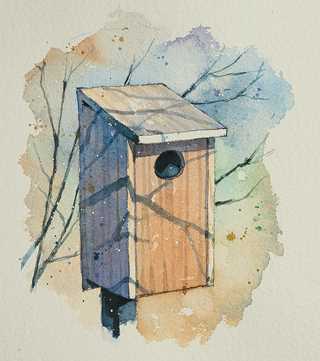
February is a short, dark month. Regardless of where you live, by now you have most of your gear stowed. It is a good time to be thinking about giving a little back. If you are handy, use this month to hang wood duck boxes. It may seem early, but in many places ice makes it easy to access areas where you need to install your wood duck accommodations. You can find plans on the DU website or buy boxes premade. Hang them from trees or stout posts. Dont forget to install critter guards to keep predators away and add wood shavings to help mother wood duck decorate her new home.
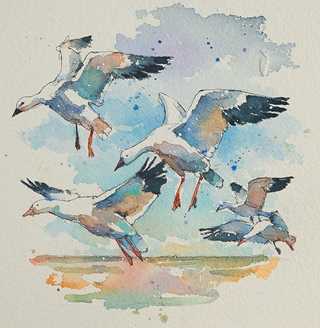
Heed the words of Bear Claw in the classic movie Jeremiah Johnson: March is a green, muddy month down below. Some folks like it. Farmers mostly. March usually brings with it the spring snow goose season. This type of hunting can reward waterfowlers with huge bags or, if they miss the flight or the X by even a little, it can result in a big show on the other side of the road, cold barrels, and frustrated dogs. Spring snow goose hunting takes monumental amounts of work, decoys, and time, and it usually doesnt appeal to those who like to sleep. But when you have been away from the waterfowl game since freeze-up, the lure of getting back outdoors and underneath a white tornado is a welcome respite, regardless of the spring rains or mud.

April usually wraps up the snow goose season as the birds pass through the northern states, and it often signals time to stow your gear for a few months. This month I usually do three things: I pay my taxes. I watch the Masters. And I send my two primary duck guns to the gunsmith. I have him tear them down to the last part and clean them completely while looking for any unusual wear and tear. This is well worth the investment, and it ensures that during the sporting clays months and hunting seasons ahead, the guns will still go bang.

By the time May rolls around, you most likely have already thought about what skills you want to work on with your dog, and enough time has passed since your last hunt that he or she is likely bored and ready to get back at it. You may be starting a new pup, and spring is a great time for that. The yard is usually beyond the muddy season by May, and that allows kids and dogs to flow freely in and out of the house sans footprints. Or you may be working on more complex skillssay hand signals and liningwith a more experienced dog. May days are not too hot and evenings are usually pleasant, and it is a great time to be out with your four-legged pal.
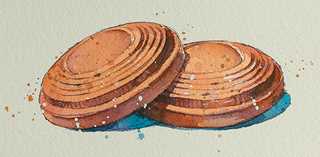
If you have kids, they are getting out of school. And though summer is on, June isnt so terribly hot. It is a great month to get started with a sporting clays league to carry you through summer. Sporting clays is the perfect hunters practice game. To keep your skills honed until hunting season, try to get in with a group that shoots once a week. Youll invariably meet other duck hunters and DU volunteers on the sporting clays coursemany of whom are likely as devoted to duck hunting as you are. It is fun to mingle with your local DU organizers, and June is a good time to get your name on a list to help with a banquet or upcoming event and commit to giving a little of your time or treasure to the sport we all love so much.
July is the polar opposite of duck season. It is in the middle of the yearnot quite early enough to think about seasons ahead, and a long way past the season that was. If you are a bucket-lister, July would be the month for your long-awaited Argentina trip. July is prime time in the duck marshes of gaucho country, and you could try your hand at shooting 12 or 13 species that we dont have in North America. Limits are liberal and the food is uniformly fantastic. For the waterfowling obsessed, Argentina can be a lighthouse in the sea of duck-hunting doldrums.
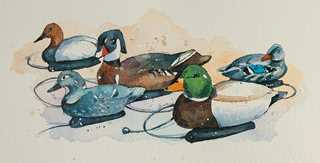
I like August. Duck season doesnt seem so far away once we move past July, and by the middle of the month the waterfowl gear catalogs start to appear in my mailbox. Even if I dont need anything, it is always a joy to thumb through them, and it gives me ideas about things I may want to try in seasons to come. This usually spurs me to head out to the garage or shed and begin the decoy readiness process. I patch or pitch the leaky blocks, paint those that need a touch-up, and clean and organize, replacing lines or weights as needed. By the end of August my decoys are usually ready to go and I know where everything is. That feels good. August is also a good time to build blinds, and the typically low water levels of late summer will make it easier to get out to your spot if you need to. Portable blinds and boat blinds can be attended to in the garage, near a fan and an old refrigerator filled with cold drinks.
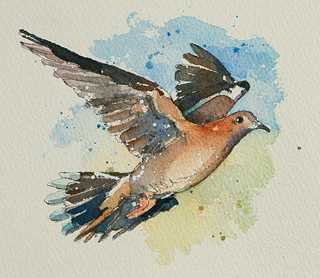
Welcome to the teal, early goose, and dove seasons! Finally, a chance to get the guns back out of their cases and expose them to the light. Many states offer early seasons, and timing can be everything if you want to put bluewings in the bag. Scout shallow-water areas thoroughly and watch for subtle changes in the weather. Even a tiny cold front that may move the thermometer only a few degrees can bring the teal to you. Early geese can be fickle as well, often feeding in fits and starts and moving frequently. But nothing beats throwing open the doors of the layout blind for the first time in months and giving the geese what former Ducks Unlimited Executive Editor Chuck Petrie used to call an event-filled landing. Dove openers are a special tradition in September, and the shooting can be red hot. If you hunt with a retriever, take extra precautions to keep him cool in what is often extreme heat. There is no better day in the early fall than a morning in the dove field and an afternoon in front of a big screen watching college football.
This is the best month, period. October weather is usually sparkling, the leaves are changing, and you can hunt ducks and geese from Canada south to about the middle of the United States. If you live in the South, October is the perfect time for a trip to Canada or perhaps the Dakotas. Go with a guide or pack your gear and head north in a truck filled with buddies who can share the driving. If you do your research, you have the potential to enjoy hunting that will often make your season at home pale in comparison. For me, a perfect October day usually involves some combination of wood ducks, yard work, and a hammock.
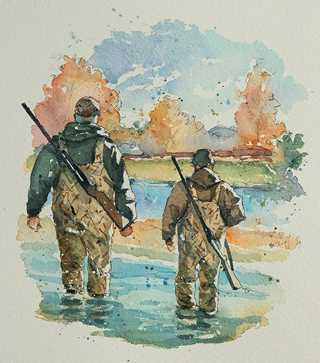
Emily Dickinson said the sunsets are sterner in November, and I like that. Simply stated, no matter where you are this month, something is happening. Ducks and geese are on the move. Even if weather isnt driving them, the shortening days send birds down the flyways. Seasons in many southern states open in November, and by Thanksgiving they are in full swing. The weekends are busy. On days when the winds strip the brown leaves from the trees, sickly voiced phone calls go out to workplaces across the country and vacation days are traded for hopes of heavy bags of red-legged mallards and starkly colored divers from points north. Thanksgiving week usually means lots of youngsters are on school break. In addition to being great company in the blind, kids offer strong backs to those of us who have been lugging decoy bags for a month already.
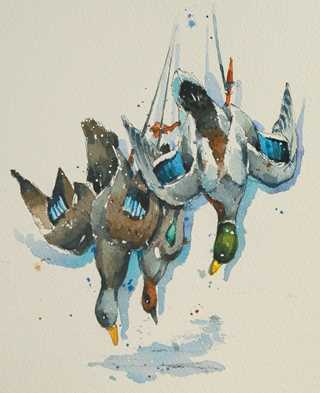
Fortunately, there is always a little bit of November left in almost every December. Though the iceman may cometh, he usually doesnt stay more than a few days. Duck and goose seasons are typically at their peak almost everywhere south of the northernmost tier of states, and wise hunters balance days afield with upcoming holiday commitments. Lets be thankful that the advent of online shopping has allowed dyed-in-the-wool waterfowlers more time in the marshes and less in the mall. There is no finer way to celebrate the year than to drive home from a winter duck hunt with the sun warming the truck, a dog asleep in his crate, and a strap of fine ducks in the box. Brightly colored holiday banners and garlands decorate light poles and porches in most of the towns and neighborhoods you pass through, and people on the sidewalks bustle happily. Roasted ducks and geese seem just right in December, and decoys and warm socks are entirely appropriate additions to a Christmas wish list. December is a fine and joyous, but never final, end to the waterfowlers year.
Ducks Unlimited uses cookies to enhance your browsing experience, optimize site functionality, analyze traffic, and deliver personalized advertising through third parties. By continuing to use this site, you agree to our use of cookies. View Privacy Policy